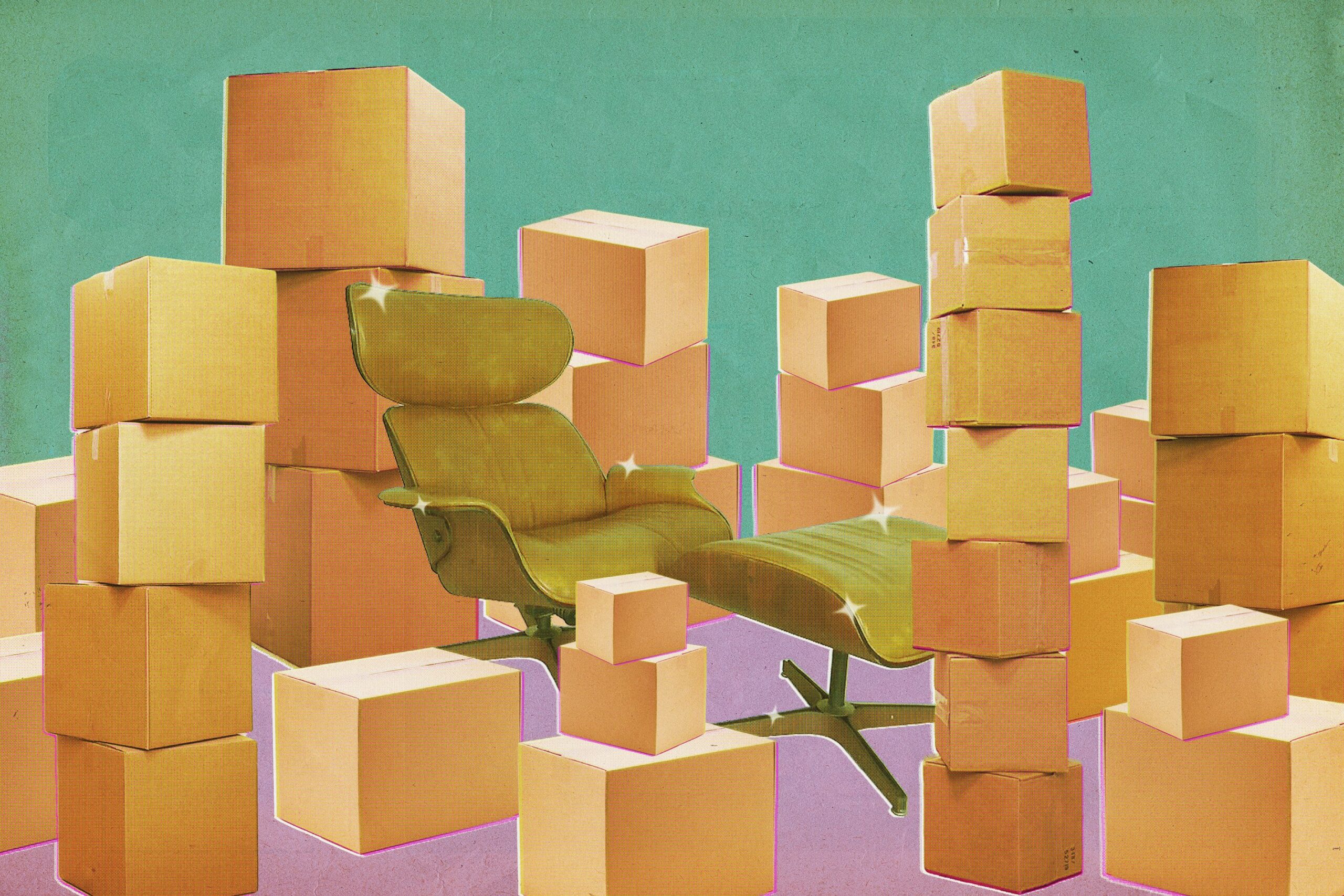
My mid-century find was fortuitous but the family history I discovered was priceless.
I stood in front of the storage unit door as my mom dug out a long-unused key from her pocket.
It was 36 degrees on a winter morning in Taos, New Mexico. My mom and I had flown in from San Diego the night before, and her sister, my aunt, had joined us from Columbus, Ohio. We were all standing in front of a storage unit that hadn’t been opened since 1970 — it had belonged to my great aunt.
An LA transplant, she’d lived in Taos for five or so years with her husband before his premature death from lip cancer. After he passed, she packed many of their belongings into this storage unit, locked the door and left. Maybe she thought she’d return in a year or so for her possessions; I’ll never know. What I do know is that she moved back to West Hollywood, where she carried on a serious case of hoarding that lasted until her death 40 years later, requiring us to spend two years cleaning out the tiny house she had filled to the brim.
We found records of the storage unit in the rubble she left behind. Knowing we needed to settle up the account and clean out the unit, we flew to New Mexico, uncertain what to expect. After spending the previous 24 months cleaning out her house in Los Angeles, we feared the worst: a cluttered 20′ x 20′ space, filled with old seeds, every shoe she ever bought (complete with box) and perhaps, another box of old teeth. (That one, I can’t explain.)
Instead, we found something much different: a treasure trove of mid-century furniture, decor and original art; a veritable catalog of my great aunt’s life before mental illness set in. The most notable item, besides the artwork? A Plycraft Mr. Chair, which sat dusty and forgotten in a corner of the unit.
At the time, I didn’t know the name or make of the chair, but I knew at first sight it was something special. Tucked away into the front right-hand corner of the unit, it was partially covered by a box and rugs that had been heaped onto it; a lamp stood in front of it, and the footstool was nowhere in sight. Blocking my path to it were five or six rows of boxes, each filled to the brim with who knew what. The chair had a layer of dust on it that was 40 years thick, so I couldn’t tell what color it was — I initially thought it was black, given the dust, but it ended up being an off-green color that made it even more unique, in my eyes.
I had just begun my love affair with mid-century furniture and design, initiated by my partner’s taste and intensified by my own attraction to the clean, organic lines that define the style. I knew at once what I was looking at was a treasure, but I couldn’t let myself get too excited: if my mom or her sister wanted it, which I was positive they would, I promised myself I would defer to them. After all, the chair belonged to their aunt, my great aunt, so they had first dibs.
Founded in 1953 by Paul R. Goldman, Plycraft initially made a name for itself by crafting plywood mid-century furniture — and later, for making copies of popular Eames styles. Though Plycraft ended up being most widely known — and sued — for its imitative designs (read: knock-offs), the Mr. Chair was the exception to that trend. Designed for the company by George Mulhauser in the 1950s, the chair came in a few different versions with some common themes: a single-shell plywood back, flared arms and leather upholstery.
Mulhauser’s Mr. Chair featured a higher back than most mid-century designs, which made it a comfortable choice for taller people — and helped it stand out from the crowd. The Mr. Chair exudes relaxation: it tilts back to a reclined position and invites one to sit and read a book … or maybe take a nap. Brown and black leather are more common on the vintage resale market, but the rare green upholstery makes an appearance from time to time.
(Though it’s easy to slouch in the chair, Mulhauser was not one: It was rumored, and later substantiated, that he played a key role in the design of the iconic Herman Miller Coconut Chair.)
As we began to move boxes out of the unit into the cool and crisp Taos air, we inched closer and closer to the mysterious chair. We were sorting items into two piles: keep, and discard. We had already found teak and Nambe tableware, original paintings by native Taos artists and my great aunt herself, and a staggering amount of trash. It was clear her hoarding tendencies started early.
My aunt and mom seemingly hadn’t noticed the Plycraft yet, but I was riveted. As we cleared some more ancient history out of the way, my aunt spotted the chair and exclaimed, “Ugh, let’s put that in the trash pile.” My mom agreed as I choked on my disbelief. “I’ll take it!” I yelled. Both my aunt and mom looked dubious, but I saw something special under 40 years of dust. The chair was trash in their eyes, but treasure in mine.
The older sister to my grandmother, Auntie Shirley was a complex, eccentric woman. She had an obvious affinity for objects, and for each birthday and Christmas would send little treasures to my sisters and me in the mail: small, woven jewelry boxes, turquoise earrings, Christmas ornaments and all manner of trinkets. After her time in New Mexico, she lived in the West Hollywood house where she and my grandmother had grown up. I remember only being allowed in the living room and backyard when we would visit — there was already a sitting room stacked up to the ceiling with books, and looking back, I wonder if we weren’t allowed in the rest of the house due to its overflow of objects.
My great aunt wasn’t outwardly kind or warm; outside of her relationship with her late husband, she found comfort in things and books over people. She had delightful taste in artwork, literature and furniture, and through her collecting, her predilection toward beautiful objects displayed a subtle appreciation for delicacy and beauty that she didn’t seem to know how to express to others, including her family. She was guarded and aloof, but her love and passion shone through her assortment of lovely and rare items. I found myself getting to know her better through her possessions than I ever did through our conversations.
We didn’t finish cleaning out the storage unit that trip. We spent three more days picking through the clutter, went our separate ways and six months later, my mom and I returned with a plan. We rented a U-Haul, loaded it up with our treasures, and road-tripped from Taos to San Diego. When we finally got back and unpacked, I cleaned the chair, being careful to leave the original Plycraft tags on the bottom, and placed it in my living room.
Upon this comfortable perch, I’ve read more books than I can count, written so many stories and sat for hours, watching the sun make dancing shadows on the wall. It’s moved with me three times. No matter where I go, I’ll never leave it in a storage unit again. It almost got thrown away once, after all. This time, I’m holding onto my family’s treasure.
Categories: Beauty



